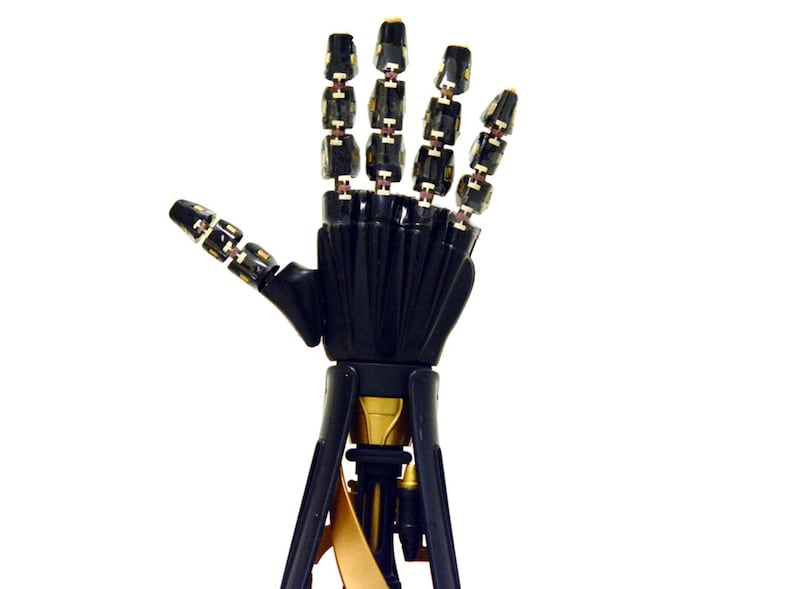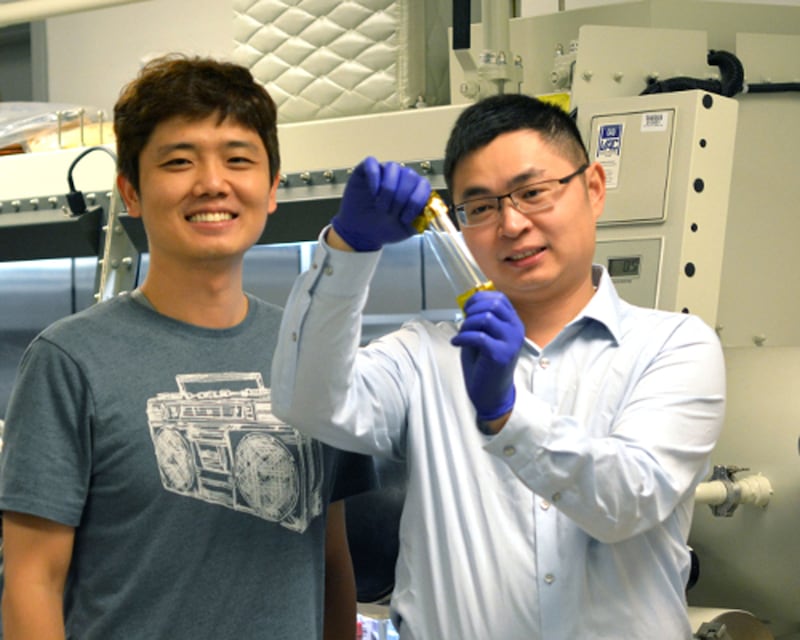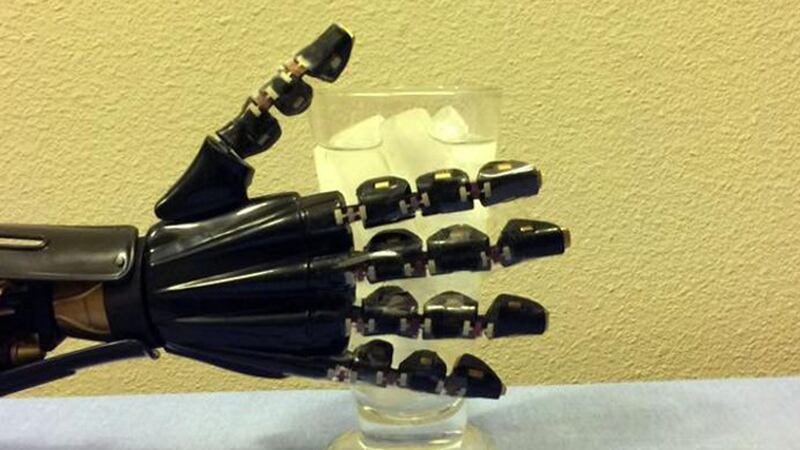A team of US-based scientists has developed “artificial skin” that could give robots and prosthetics a sense of touch.
Researchers from the University of Houston say they have created a stretchable electronic skin prototype that can differentiate between hot and cold.
They say it is the first time a semiconductor in a rubber composite format has been designed that enables stretchability while allowing its electronic components to retain functionality – even when the material is stretched by as much as 50%.

“Our strategy has advantages for simple fabrication, scalable manufacturing, high-density integration, large strain tolerance and low cost,” Bill D Cook, assistant professor of mechanical engineering at the University of Houston said.
The team created the electronic skin and used it to demonstrate that a robotic hand could sense the temperature of hot and iced water in a cup.
The skin, which was prepared by using a silicon-based polymer known as polydimethylsiloxane and tiny nanowires, was also able to interpret computer signals sent to the hand and reproduce the signals as American Sign Language.

“The robotic skin can translate the gesture to readable letters that a person like me can understand and read,” study author Cunjiang Yu said.
The scientists said their “stretchable skin” could have other uses as well, adding: “The discovery of a material that is soft, bendable, stretchable and twistable will impact future development in soft wearable electronics, including health monitors, medical implants and human-machine interfaces.”
The results are reported in the journal Science Advances.








